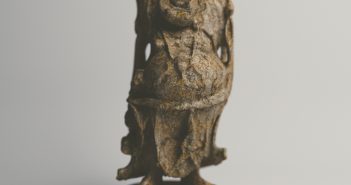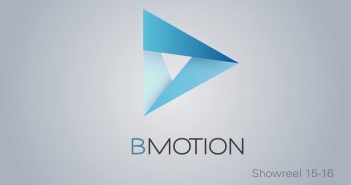I recently ran across Jack Darton's page on Behance, and was immediately impressed by the quality of his work, so I decided to reach out to him for an interview to learn more about him and his work. So let's see hear what he has to say.
Can you tell us a little about yourself and how you became a CG artist?
I’ve been an artist for as long as I can remember, back before CG art was a widespread thing. It was rare that I wasn’t sat doodling in school while supposed to be working. Alongside my passion for drawing, I’ve grown up with another love - anything automotive. At around age 12, I found a website showcasing digitally modified images of cars, created using Photoshop. I knew at the time that my stepdad had a copy of this program on his laptop for work, so following some simple tutorials, I began working on images of cars. It spawned there. Over the next few years, my abilities improved and I branched out into client work.
What inspires you to design and create?
Inspiration is a strange topic for me as I can’t point to specific things that gets my creative juices flowing. Any inspiration I have stems from random parts of my day. I’ll see an image, a shape, some colours, emotions, a piece of music, anything can set it off.
How do you use Blender in your workflow? And what other tools do you use?
I use Blender alongside Zbrush for any modeling I do. Organic shapes/models are created in ZBrush due to it ease of use and creative flow. Blender is used for any hard surface modeling, along with composition, rendering (Cycles), and UV work. I use Substance Painter 2 for all of my texturing and materials, and Photoshop CS6 for post work on the final render.
Pixologic and Allegorithmic were kind enough to provide me with free copies of both Substance Painter (1 & 2), and ZBrush 4R7 in return for me promoting their software, and of course using it in my workflow. I have nothing but good things to say about both - not due to their generosity, but due to their helping hand, extended to an Artist looking to make his mark. Any time I needed help with either of the programs, their customer support was warm, welcoming, prompt, and helpful.
Blender and Cycles are of course open source, and deserving of all of the praise they receive. You likely wouldn’t be reading this interview on BlenderNation if you didn’t share the same opinion. As for Photoshop CS6, I purchased a full license a couple of years ago due to such a great piece of software being regularly pirated.
If you could have one feature added to Blender, what would it be?
An option to use a truly unbiased path tracing version of Cycles, enabling accurate rendering of dispersion and caustics. I totally understand why Cycles uses the method it does, but I think the option to use both would be great,
What’s your favorite part of being an artist?
My favourite part of being an Artist is seeing the great, warm comments from people who see my finished work for the first time after I’ve spent my time seeing it develop from concept to final. It makes it worth it. The Blender community in particular is extremely open and collaborative, offering help, opportunity, feedback, and honest critique.
What is your favorite piece of work that you’ve done and why?
It has to be my gasmask model. It’s one of the few times that one of my ideas has followed the road from idea to final image, ending up exactly how I envisioned.
Do you have any tips or insights would you give to other artists looking into a career in CG?
You’re going to suck. No, I mean it. When you develop your skills as an Artist, the early stages will be both exciting and disappointing. It’ll knock your motivation when your finished work doesn’t truly represent your initial idea. It’s just how these things go. The difference between an Artist and other people is the stage at which you decide to give up. Becoming a great Artist requires discipline and patience due to the inevitable disappointment you’ll experience during the process. My advice? Keep going. Learn from your mistakes, and instead of blindly following tutorials and repeating keystrokes, learn why the keystrokes do what they do. Once you understand the mechanics behind the buttons, you’ll be able to extrapolate, lending you the ability to use the methods to create your own ideas.
Don’t misunderstand me, tutorials are an amazing thing. The problem with replicating the Artists methods is that at the end, you’re only capable of producing the exact same thing.
As for making a career - talk to everybody you can. Send out resumés, your portfolio, research the needs of your target client in order to offer a paid solution. Don’t be a recluse. The bigger your stage, the bigger your audience, the more work you’ll bring in. Don’t stop improving. You have the ability to become a truly amazing Artist, but the only way to achieve this is to avoid the temptation of quitting. Keep going.
Thanks for the interview jack! You can find more of Jack's work on his Website and Behance page using the links below.

















2 Comments
Wow, impressive portfolio and inspiring interview, thanks :)
Dude for how long have u been using blender